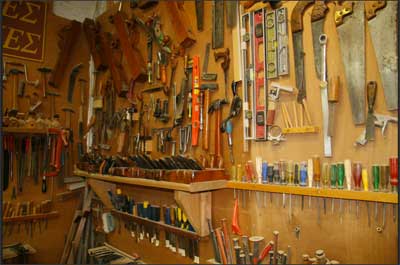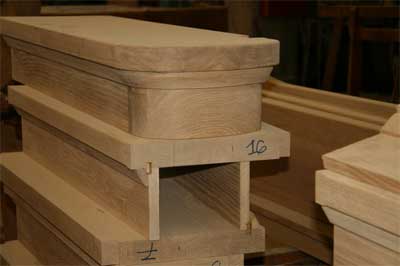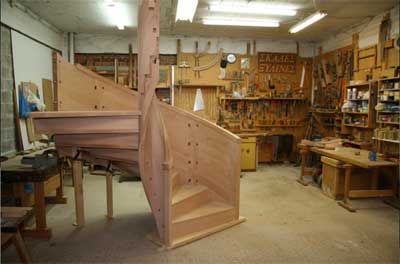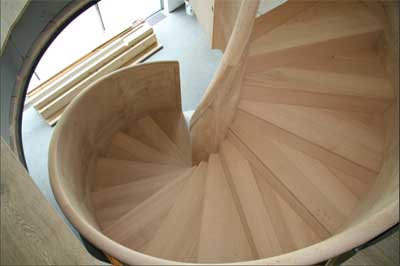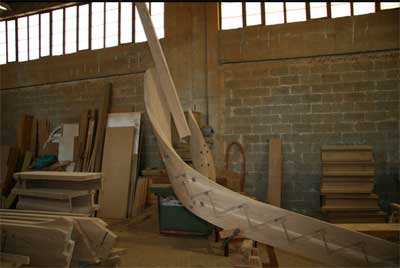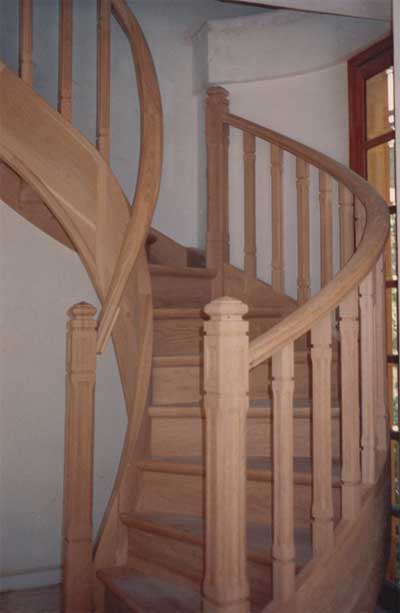
Tasos Vardopolous grew up surrounded by the craft of wooden stair making, and began working in the business in 1973. He is the third generation of his family to participate in this craft: Anastasios Vardopolous was the first family member to practice wooden stairmaking in Athens, Grece, beginning in 1905; his son Yiannis and grandson Tasos followed in his footsteps.
Tasos is still using the tools inherited from his ancestors, and “Each and every one of my wooden staircases is completely built using traditional hand tools,” he said.
Tasos currently has a collection of 1,350 classic hand tools – “I am always trying to discover any old hand tool from decommissioned craftsmen in order to enrich my collection and my experience,” he said. “Certainly, discovering new tools is interesting, but I always prefer to use those tools that allow me to remain faithful to tradition.”
Tasos uses those tools (among them: hollow planes, chisels, spokeshaves, marking gauges, and more) to shape and create the stairs. The joint between each stairstep and the spiral string is a key part of the construction.
“The steps are implanted in the helicoidal string one by one,” Tasos explained. “That means that a recess needs to be created into the string, and that must be of the same shape and size as the side face of the step. Therefore, the only way is to patiently carve the string without room for mistakes.”
Hardwood lumber is necessary for the stairs and strings to protect against wear and tear, Tasos says. He finds oak to be the most suitable for this purpose. For the handrails, balustrades and railings, he prefers using what in Europe is called “noble lumber”: exotics and highly figured woods.
Each staircase is completed in his workshop, then moved in pieces to the place where it will be installed. Many of those locations are in private homes, but you can also find one of Tasos’s wooden spiral staircases in the Benaki Museum in downtown Athens.
One of the most challenging projects he has completed, Tasos said, was “a case when I was asked not to put rails between the helicoidal string and the handrail. So the helicoidal string, the handrail and the balustrades were replaced by one solid piece of wood, 1.1 meters tall, which had to be carved and twisted parallel to the direction of the stair. That was a very demanding construction of a staircase that had never before been constructed in Greece. There might be such constructions that give the illusion of a piece of wood twisting around the steps and protect whoever walks the staircase, but they are not made from a solid piece of wood.”
In this project and in others, Tasos said, the art of making handmade wooden stairs is related to sculpture. “For this reason, I am convinced that no technique can bring a staircase to perfection if the craftsman does not possess the feel of a sculptor.
“It is also certain that good taste cannot be taught, but is rather a matter of culture and constant effort. That is why I consider myself to be a constant student that keeps trying day in and day out to do his work in the best possible way.”
In addition to being a student, Tasos also wants to be a teacher. While he loves his craft, he notes that he is unfortunately the last one of his family line to carve wooden stairs. He also cannot find a school or other educational institution in Greece where he can share his knowledge, so he is now turning his efforts abroad.
“The hand arts in Greece and also around the world, as far as I know, are declining, and less and less people are interested to make a living out of them,” Tasos said. “One of my future goals is to teach my art.”
